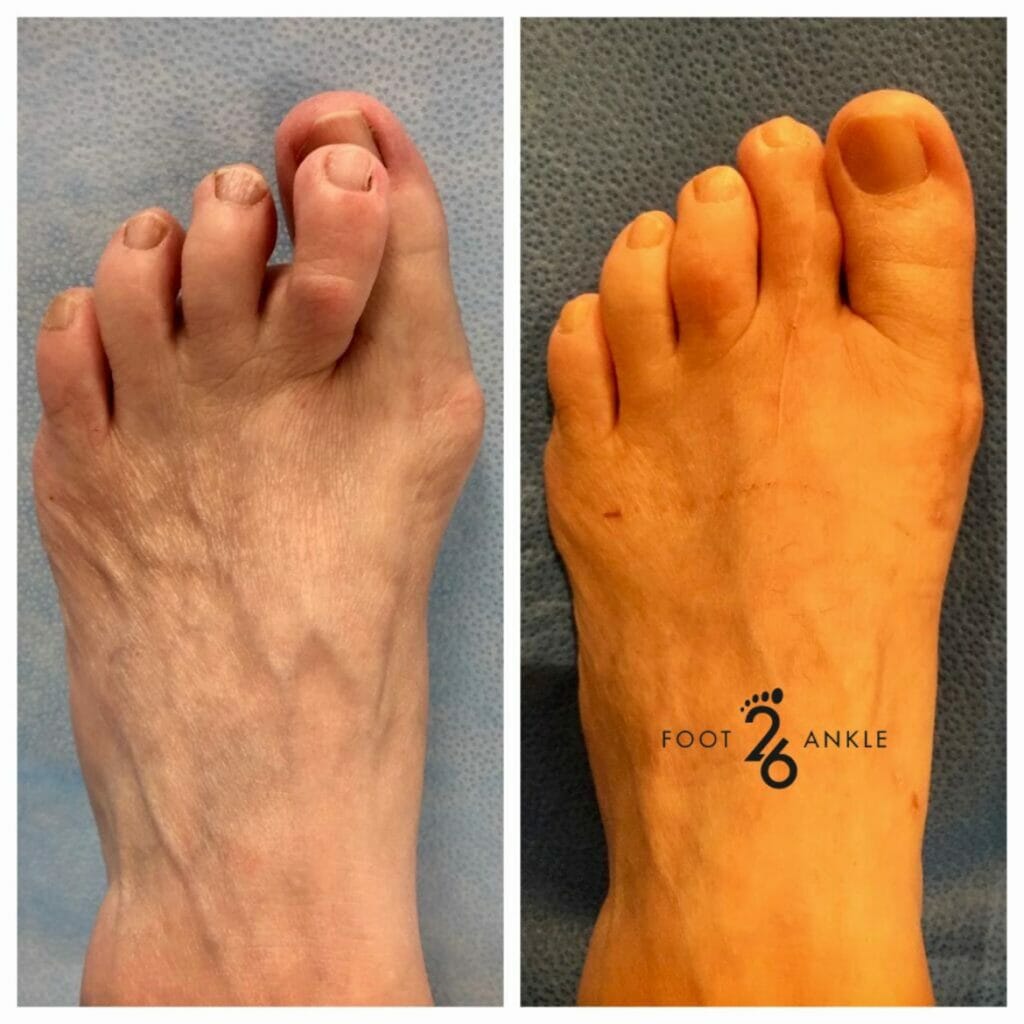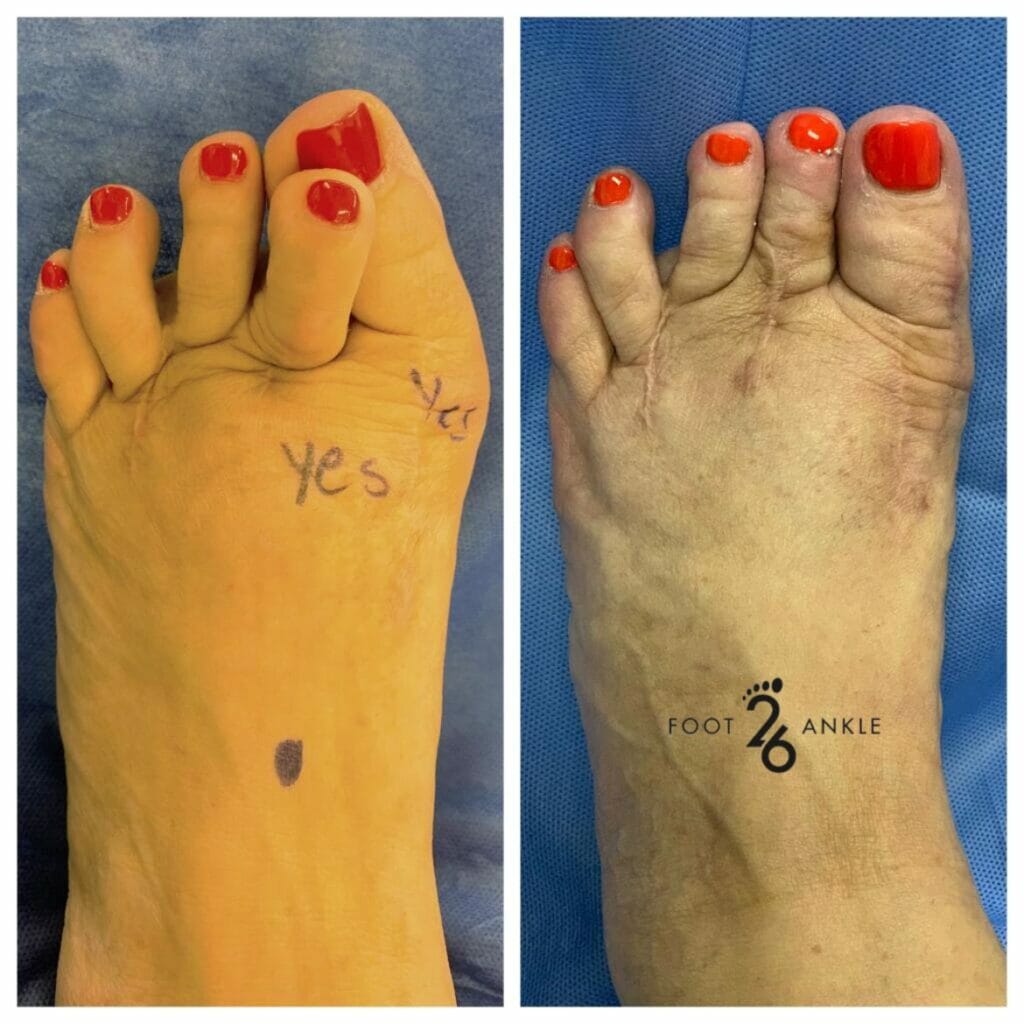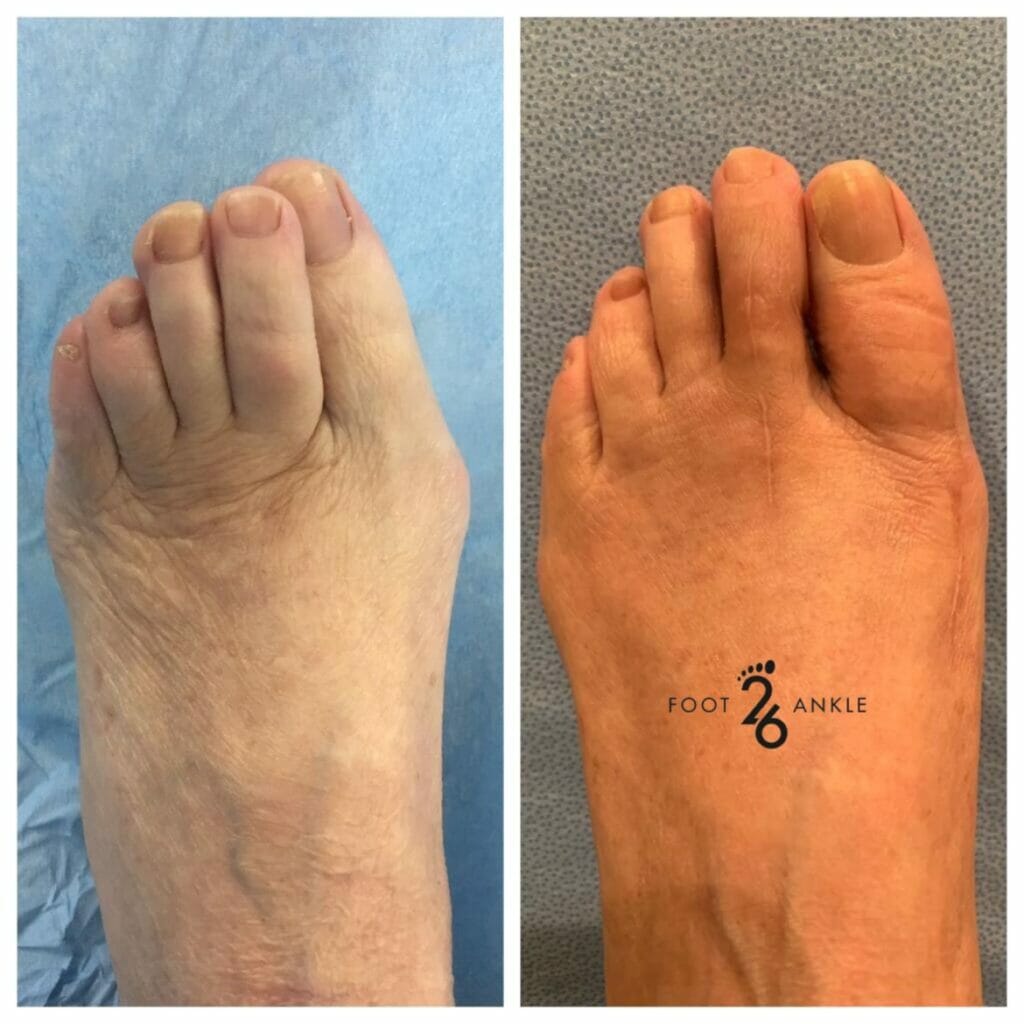The 26 Review
- What is Cross Over Toe? When the second toe is drifting towards and rests over the big toe
- How The toe is realigned through a combination of bone and soft tissue procedures
- Why The abnormal toe alignment worsens overtime
- Recommended for Patients who have ball of foot pain, swelling at the base of the toe, and difficulty wearing shoes
- Length of Treatment The surgery can take between 1-2 hours.
- Downtime 6 weeks of decreased activities

Let’s take a closer look…
Crossover toe is a common foot condition that affects the alignment of the toes, which can lead to discomfort and pain. It occurs when one of the toes, typically the second toe, begins to drift and cross over the adjacent toe. This misalignment can occur due to a few factors, such as improper footwear, genetic predisposition, injury, and/or underlying medical conditions, like arthritis. As mentioned, the symptoms for this condition often include pain, swelling, redness, and difficulty wearing shoes comfortably. If left untreated, the condition will worsen, which can cause corns, calluses, and even ulcerations due to the friction and pressure between the toes. Early diagnosis and intervention is crucial to prevent worsening symptoms. Treatment options range from conservative measures to surgical intervention. Non-surgical approaches involve wearing supportive footwear, utilizing orthotic devices to realign the toes, and practicing exercises to strengthen the affected muscles and ligaments. In severe cases, surgical correction might be considered to reposition the toes and restore proper alignment. If you or someone you know is struggling with crossover toe, contact your Podiatrist to schedule an assessment today to determine a treatment plan.
Procedure Details: Pre, During & Post Surgery Expectations
As mentioned, crossover toe surgery is aimed at correcting the misalignment of toes and relieving the pain and discomfort associated with the ailment. Prior to this procedure, it’s crucial to begin with a consultation with your podiatrist. The podiatrist will assess the severity of the condition, review medical history, and conduct the necessary tests, such as X-rays and/or other advanced imaging scans. During this assessment, the healthcare provider will address the steps of the procedure, as well as answer any questions or concerns the patient may have. Patients may be advised to stop certain medications that could interfere with surgery. In addition, patients should avoid eating and drinking for a specified period before the procedure.
The surgery is typically performed under local anesthesia, which numbs the foot, or under general anesthesia, which induces sleep. This choice is dependent on the patient’s overall health and the surgeon’s preference. To begin, the surgeon will make incisions to access the affected toe joint. Depending on the severity of the crossover, they may release ligaments, realign the bones, or even insert small implants to maintain proper positioning. To stabilize the toe, tools like pins, screws, or wires may be used to keep the toe correctly positioned during the healing process.
Crossover toe surgery is an outpatient procedure, meaning patients should devise a plan on how to return home post-surgery. After the surgery is completed, patients can expect some swelling, discomfort, and possibly pain. The foot will likely be immobilized with a bandage and a walking boot. For pain management, the healthcare provider will prescribe post-operative pain medication. Patients are advised to keep the foot elevated to reduce swelling. In conjunction, it’s advised to avoid putting weight on the operated foot for a period advised by the surgeon. Crutches or a walker might also be necessary initially. During the healing process, the surgeon might recommend physical therapy to improve mobility, strengthen the foot, and prevent stiffness.

Benefits and Risk Factors
It is important to note that all surgeries come with their benefits and risk factors. Speaking with a podiatrist prior to this procedure is crucial to feel prepared. The benefits of crossover toe surgery include the following; misalignment correction, pain and discomfort relief, and halted progression of the deformity. This surgery addresses the source of pain caused by the misaligned toe joint and any associated conditions like corns, calluses, or ulcerations. Another benefit is improved function. Properly aligned toes contribute to better foot function, allowing for a more natural gait and reduced strain. Patients also experience improved range of motion in the affected toe post-surgery. Overall, this surgery prevents the condition from worsening, potentially avoiding more extensive interventions in the future. There are many benefits of this procedure, but it can entail some risk factors. Like any other surgical procedure, there is a risk of infection at the surgical site. Proper wound care and following post-operative instructions can minimize this risk. Pain and swelling are common post-operative occurrences, but with time, those symptoms will subside. In some cases, there’s a slight risk of nerve damage, which could result in numbness, tingling, or altered sensation. In conjunction, despite surgical correction, the toe alignment might shift again over time, requiring further treatment. In the event implants are used to stabilize the toe, there is a risk of issues like implant failure, discomfort, or irritation. It’s important to note that risks associated with crossover toe surgery can vary based on individual health factors and the specific surgical approach. Patients should openly communicate any concerns with their healthcare provider and diligently follow pre and post-operative instructions to optimize their surgical outcome.

